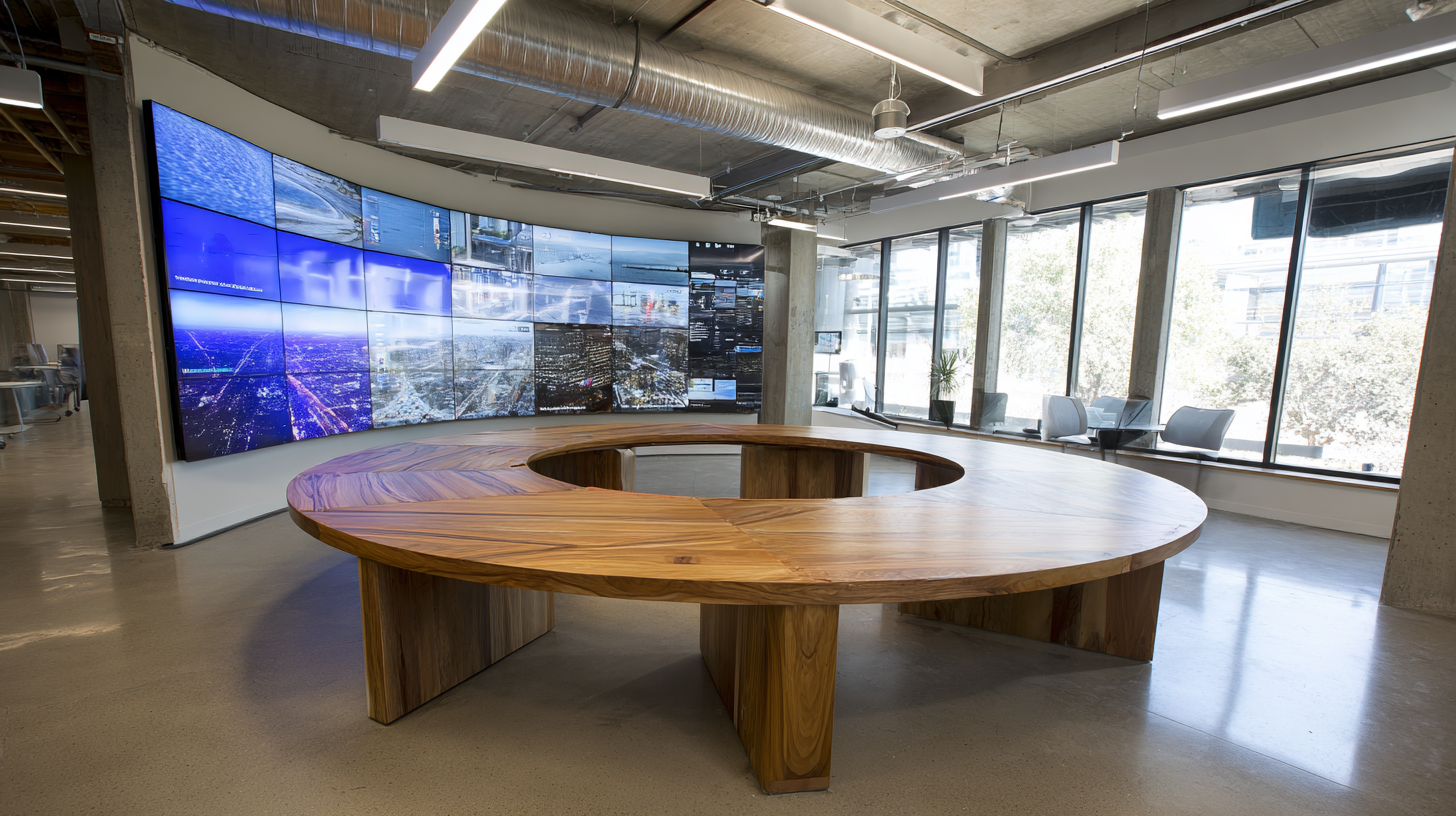As businesses increasingly embrace modern technology, the demand for innovative display solutions has surged, particularly for Circular LCD Displays. According to a recent report by MarketsandMarkets, the global display market is projected to reach $800 billion by 2025, with LCD technology continuing to dominate due to its versatility and efficiency. Circular LCD Displays stand out by offering unique design possibilities that enhance user engagement and aesthetic appeal in various applications, from retail environments to industrial settings. As leading manufacturers worldwide innovate and expand their production capabilities, it is essential for businesses to carefully select the right display that aligns with their functional requirements and branding objectives. Whether for advertising, information dissemination, or as part of sophisticated equipment, understanding the key features and applications of Circular LCD Displays can significantly impact a company's success and market presence.

When selecting a circular LCD display for business needs, it’s essential to understand the key features that differentiate these displays from standard ones. Circular LCD displays are becoming increasingly popular in various industries due to their unique design and enhanced functionality. They offer superior visibility from different angles, making them ideal for interactive kiosks and point-of-sale systems. According to industry reports, businesses utilizing innovative display technologies can improve customer engagement by up to 30%, showcasing the critical role of displays in modern business environments.
Tip: Consider brightness levels and viewing angles when choosing a circular LCD display. A display with higher brightness can ensure readability in bright environments, while optimal viewing angles can enhance user interactions.
Moreover, features like touch functionality, customizable interfaces, and integration with artificial intelligence can significantly enhance operational efficiency. Recent trends show that AI integration within display systems can lead to reduced operational costs by automating functions such as inventory tracking and customer interaction. Companies implementing AI solutions in their displays can expect a boost in service speed and accuracy, further reinforcing the importance of selecting a display that supports such advanced features.
Tip: Look for displays that offer smart connectivity options. This will facilitate seamless integration with your existing technology infrastructure, allowing for real-time data updates and increased overall efficiency.
When selecting a supplier for circular LCD displays, evaluating manufacturer reliability is crucial to ensure you make a sound investment for your business. One of the key factors to consider is the supplier’s track record. Look for manufacturers with a history of producing high-quality products and a reputation for meeting delivery timelines. Customer reviews and testimonials can provide insight into their reliability and customer service.
Tips:
When selecting the best circular LCD display for your business needs, it’s essential to understand the different types available and how they cater to specific applications. There are primarily three types of circular LCD displays: TFT (Thin Film Transistor), IPS (In-Plane Switching), and OLED (Organic Light Emitting Diode). Each type has unique characteristics that may fit various requirements depending on factors like brightness, viewing angles, and color rendering.
**Tips:** When assessing display options, consider what environment the display will be used in. For outdoor settings, a high-brightness TFT display may be preferable due to its visibility under sunlight. Meanwhile, if your business involves elaborate graphics or detailed visuals, an OLED display can offer exceptional contrast and vibrant colors, enhancing the user experience significantly.
Another factor to consider is the resolution. A higher resolution will provide clearer images, which is crucial for applications that rely on detailed visual information. When comparing displays, make sure to examine the pixel density and how it aligns with your specific requirements. **Tips:** Always review product specifications and user feedback to ensure that the display not only meets technical requirements but also satisfies operational durability and maintenance needs.
When it comes to selecting a circular LCD display for your business, it’s crucial to strike the right balance between
cost and quality. Often, businesses may lean towards the least expensive option, but this can lead to higher
long-term costs due to poor performance or durability. To ensure you're making a wise investment, consider first what features are essential for your specific needs—
brightness, resolution, and size can all impact
the effectiveness of your display.

As we step into 2024, the competition between Micro OLED and Micro LED display technologies is heating up, particularly in the realm of near-eye displays for augmented reality (AR) applications. These microdisplay technologies are pushing the boundaries of what is possible in display quality, offering brighter visuals with improved contrast ratios and energy efficiency. The ongoing advancements are not just about larger sizes but also about enhancing user experience, making these displays essential for businesses looking to leverage AR in training, marketing, and interactive engagements.

The automotive industry is also witnessing significant strides in display technology, with increasing demand for advanced cockpit solutions and head-up displays. Reports indicate that a variety of display types will be integrated into vehicles, improving navigation and enhancing driver safety. As we look ahead to 2034, the convergence of innovative technologies in both consumer and automotive displays will offer unique opportunities for businesses to enhance their operations, thereby capitalizing on the trends transforming the display market.
Staying informed on these developments is critical for businesses aiming to adopt the best circular LCD displays tailored to their specific needs.
